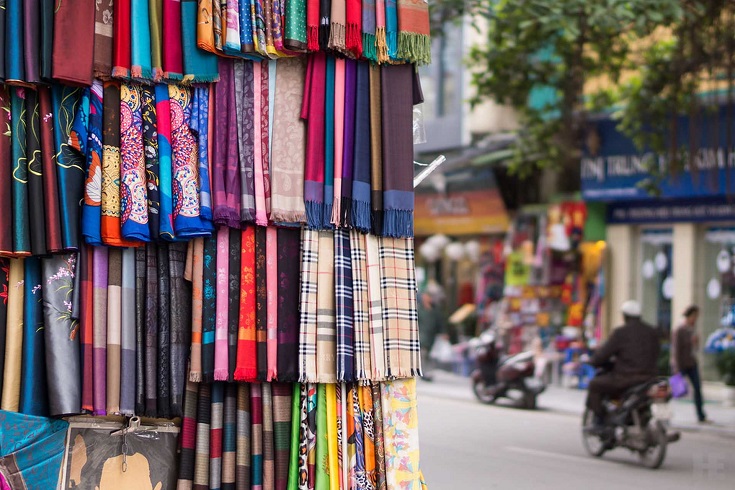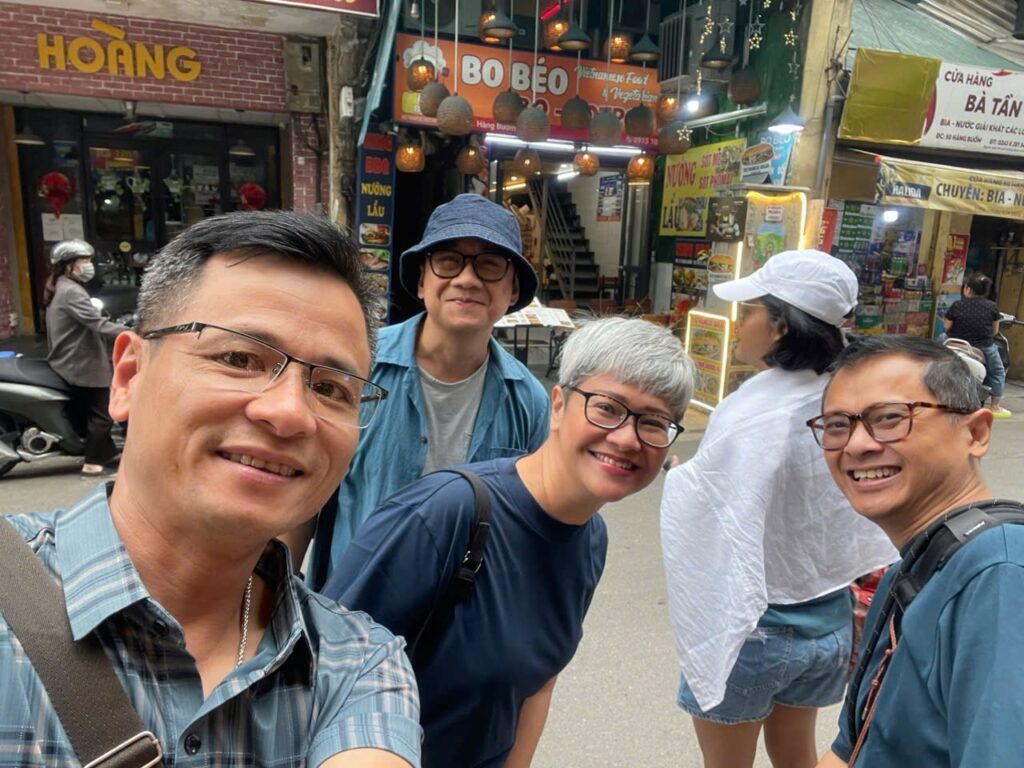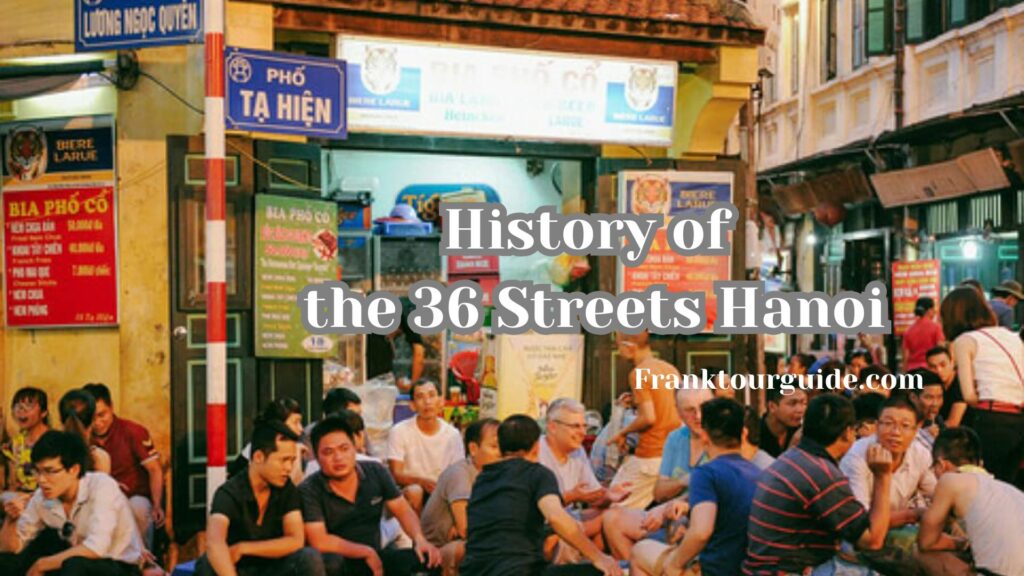History of the 36 Streets Hanoi is an unmissable part of the city’s charm and cultural identity. Located in the heart of the Old Quarter, this vibrant area perfectly blends history, traditions, and modern life. If you are planning a Hanoi city tour or joining a Hanoi street food tour, exploring these ancient streets is a must. For centuries, the Old Quarter has witnessed Hanoi’s transformation from a modest riverside settlement into the bustling capital it is today.
In this article, we’ll explore the fascinating history behind Hanoi’s 36 streets, uncover how they got their names, and discover why this area remains one of the top attractions for travelers.
The Origins of Hanoi’s 36 Streets
The 36 streets of Hanoi, also known as Hanoi Old Quarter, date back more than 1,000 years to the Ly Dynasty (1010-1225), when Emperor Ly Thai To moved the capital from Hoa Lu to Thang Long, the ancient name of Hanoi. As the city grew, skilled craftsmen and traders from across Vietnam flocked to the area to set up workshops and sell their goods.

Each street became associated with a particular craft or product. Over time, these streets were named after the goods they specialized in. For example:
- Hang Bac: Street of silver craftsmen
- Hang Ma: Street of votive paper and festival decorations
- Hang Gai: Street of silk products
- Hang Dao: Street of dyed fabrics
This distinctive naming system helped buyers easily find what they needed, making the Old Quarter an early commercial hub in Vietnam’s history.
Vietnam Travel Tips for First Timers: What Every Traveler Should Know
The Golden Age of the 36 Streets
During the 15th to 18th centuries, Hanoi’s 36 streets reached their golden age. Traders from China, India, and even Europe came to Thang Long to buy luxury goods, spices, and fine crafts. Many of the ancient guild houses still stand today, showing the influence of both Vietnamese and Chinese architecture.

Interestingly, despite being called the “36 streets”, the Old Quarter actually has more than 70 streets now. However, the name “36 streets” has endured through time, symbolizing the area’s rich heritage.
Walking through the Old Quarter today, you’ll still find streets maintaining their traditional craft:
- Hang Bac still offers silver jewelry.
- Hang Gai is famous for silk products and tailor-made clothes.
- Hang Thiec continues to sell tin products.
These preserved traditions make the Old Quarter a living museum of Hanoi’s cultural identity.
Discover the Charm of Hanoi Old Quarter: A Must-Visit for First-Time Travelers
The 36 Streets Today: A Blend of Old and New
Hanoi’s Old Quarter has evolved into a fascinating fusion of ancient culture and modern lifestyle. Traditional tube houses with their narrow fronts and deep interiors still line the streets, while cozy cafes, boutique hotels, and vibrant street markets cater to locals and tourists alike.

If you’re joining a Hanoi city tour, you’ll likely wander through these charming streets, passing historical landmarks such as:
- Bach Ma Temple – one of Hanoi’s oldest temples.
- Dong Xuan Market – the largest market in the Old Quarter.

- O Quan Chuong Gate – the last remaining ancient city gate.
Moreover, the Old Quarter is a paradise for food lovers. A Hanoi street food tour here offers an authentic culinary experience, with dishes like:

- Pho (Vietnamese noodle soup)
- Banh mi (Vietnamese baguette)
- Bun cha (grilled pork with noodles)
- Egg coffee – Hanoi’s signature drink
This blend of history, culture, and gastronomy makes the 36 streets an unmissable highlight of any trip to Hanoi.
Why You Should Visit the 36 Streets
Exploring Hanoi’s 36 streets is more than just sightseeing; it’s a journey through time. As you stroll along these narrow alleys, you can witness centuries-old traditions coexisting with modern life. Whether you’re passionate about history, love tasting local delicacies, or simply enjoy wandering charming streets, the Old Quarter has something special to offer.

Booking a Hanoi city tour will ensure you don’t miss the most iconic landmarks, while a Hanoi street food tour will introduce you to the culinary wonders that have made the city world-famous.
Conclusion
The 36 streets of Hanoi are more than just roads and markets; they are the living heartbeat of the city, preserving its cultural identity while embracing modernity. From ancient temples and bustling markets to unique crafts and mouthwatering street food, the Old Quarter offers a fascinating glimpse into Hanoi’s past and present.
So, if you’re planning a trip to Vietnam, make sure to include a Hanoi city tour and a Hanoi street food tour in your itinerary. The 36 streets are waiting to tell you their thousand-year-old stories.
Which Month is Best to Visit Hanoi? A Guide for Asian Travelers
FAQs
What is the history of the 36 Streets Hanoi?
What local dishes should I try in Hanoi’s 36 Streets?
What is the richest street in Hanoi?
What is the most beautiful street in Hanoi?
You would be interested in:
Incense village and Bat Trang ceramic village
Hanoi City Tour: Culture and History
5 Days Tour Hanoi Halong Bay Ninh Binh – Best Vietnam Itinerary 2025




